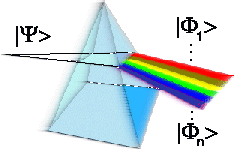Łukasz Badowski and Magdalena A. Załuska-Kotur
Collective diffusion is investigated within the kinetic lattice gas model for a system of interacting particles in one dimension. Analytic relations between the collective diffusion coefficient, diffusion activation energy, the attempt frequency pre-exponential factor, vs the particle density for both attractive and repulsive particle-particle interactions of an arbitrary strength are derived using the recently proposed [Phys. Rev. B 70, 125431 (2004)] variational method. The analytic results agree with results of Monte Carlo simulations within a broad range of temperatures. At low coverages for strongly repulsive interactions the activation energy is roughly equal to its value for the noninteracting system but around =0.5 it decreases rapidly by more than strictly accounted for by adparticle-adparticle interactions. Only at significantly higher coverages it increases reaching the expected limiting value. Peaks in the coverage dependence of the effective attempt frequency (for both the repulsive and the attractive interactions) are interpreted to reflect peaks in the total number of microscopic configurations accessible to the system at a given coverage and temperature. It is argued that the method used in this work allows for making meaningful estimates of the diffusion coefficient for systems far from thermal equilibrium.
Phys. Rev. B 72, 245413 (2005)
skip to main |
skip to sidebar

Quantum Optics Group, Institute of Physics, Polish Academy of Sciences

Browse publications by author
- Mariusz Gajda (30)
- Arkadiusz Orłowski (29)
- Magdalena Załuska-Kotur (20)
- Maciej Janowicz (16)
- Marian Rusek (16)
- Jan Mostowski (14)
- Zofia Białynicka-Birula (10)
- Władysław Żakowicz (9)
- Emilia Witkowska (2)
- Tomasz Świsłocki (2)
- Filip Krzyżewski (1)
- Jaroslaw Gocałek (1)
- Łukasz Badowski (1)